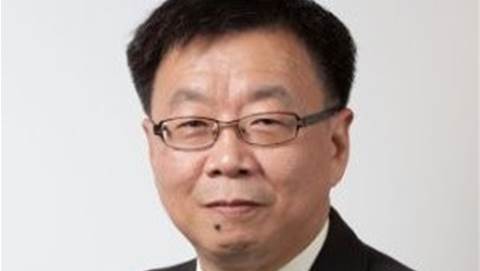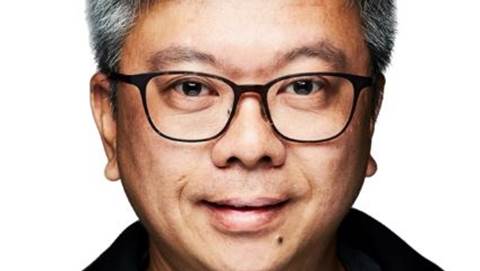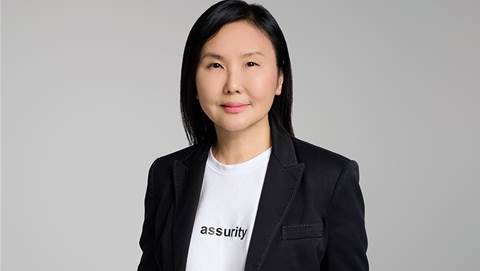From the cloud to smart computing and sustainable data centres, how much has the post-pandemic tech landscape changed the way we do business? How should we plan ahead in ways that can best maximise our tech investments and be better guardians for the environment in the future?
iTNews Asia sits with Sumir Bhatia, President, Asia Pacific, Lenovo ISG – who is in his role is responsible for driving the company’s growth across its compute, storage, networking, and services offerings – to find out his thoughts on how the industry has evolved this year.
iTNews Asia: Was the need for the instant availability of IT resources been the most key factor in moving to the cloud? What’s driving adoption for your APAC customers and what business applications are they moving?
In the early days of the pandemic, many companies had knee-jerk reactions to the situation –leaders were suddenly asking for 10-fold increases in bandwidth, compute capacity and storage so that they could support remote working and keep their business ticking. Obviously, IT departments haven’t planned for this, so that pushed many organisations to the cloud.
In terms of which applications make the cloud shift, it typically starts with email platforms as a gateway to the cloud. The next step for companies would be apps that many people need to use in the same way, like HR information systems. Finally, we also saw more mission-critical applications being moved such as legacy infrastructure.
What’s important is not what sent companies to the cloud, but what they’re going to do now that they’re here. More than a year on, most businesses have come to terms with the uncertainty in today’s environment, and know that it’s time to find long-term solutions instead of a stop-gap. They’re re-evaluating what they put in place over the past 18 months - and deciding whether the strategy needs to be changed, and what applications to shift.
For example, COVID-19 triggered emergency remote teaching and not every school was well-equipped to adapt and smoothly manage this transition. From bandwidth capacity issues, data management to re-skilling campus IT teams all while converting curriculum into online formats. Many schools found themselves scrambling as they couldn’t keep their students waiting with learning delayed. We worked with Brisbane Boys College to provide their campuses with back-end systems that would enable their school portals to be “always-on”.
In APAC, we also saw a lot of customers grappling with opex (operating expenditure) versus capex (capital expenditure), so they often end up choosing to adopt the hybrid cloud for its consumption-based, opex pricing model.
iTNews Asia: Some businesses in this region face difficulty in moving away from legacy infrastructure or misalign IT or business priorities. Is the hybrid cloud a better approach? What advice can you give as a strategy and what steps should they take?
There’s no doubt that we’re seeing greater demand for both IT services and devices that may be difficult to meet with legacy infrastructure. So in that sense, hybrid cloud is great because it’s able to offer the same level of security when employees are working from home as compared to in the office. It also improves performance by giving customers the option of keeping applications on-premise together with their data.
But rather than saying that one strategy is better than another, I would say that the customer needs to decide what they want -- it starts with a mindset shift in terms of thinking about how the company can be better. There’s often a rift between what the customer expects and what a technology provider has to offer. To bridge this gap, customers need to have a clear vision of what they want to achieve, as well as a good understanding of the experience and capabilities of their technology provider to deliver on a project. That ultimately helps to reduce complexity and keep track of goals.
Considering the volatile market, some organisations may find it tough to commit and plan too far ahead, but with the right technology in place, businesses can scale up or down their capacities and costs to match demand.
iTNews Asia: You’ve often spoken about the ‘smart normal’ in computing today? Why ‘Smart’? What are the variables that have changed post-pandemic that are now becoming permanent?
At Lenovo, we define ‘smart’ as technology with a purpose.
We want to build smarter things, whether it’s for businesses, universities, or even people to connect, live, work and play. The transformative potential of our smarter technology solutions isn’t always so visible as a modern steel bridge or a massive public transit network.
It could be augmenting medical imaging technology with AI algorithms to process data instantly and improve accuracy of results -- helping make cancer treatment cheaper, more effective and less taxing on patients; or the Lenovo VR Classroom which enables young minds around the world to travel to places they’ve never gone before. Safely inside their classrooms, they can soar past the rings of Saturn or lock eyes with a monkey in the Amazon rainforest.
That brings us to where we are in computing today. Let’s call a spade a spade – things aren’t going back to the way they were, in terms of the way we work, where we work or even the kind of work we’re doing. There’s one study that I found really fascinating from The Economist which speculated that the economy is going to be operating at around 90% capacity as people chose to avoid in-person activities. The knock-on effect is that we’ll end up rendering certain occupations worth about 10% of the workforce unviable. They dubbed this the 90% economy, and I think there’s some real truth to that.
The “smart normal” is one where business leaders are going to ask themselves the tough question of where they want to be - whether it’s 70, 80 or 90%. And technology is likely going to be what bridges the gap to 100.
That’s not to say it’ll be smooth sailing – my advice is that businesses acknowledge and take advantage of this critical juncture. Form two teams with different focuses and mindset. One team that’s focused on fighting the fire in the short term and solving the immediate problems the company’s facing. And another team with a mindset to plan the offense and defense strategy for your future; regardless of what percent economy you want to be at.

What’s important is not what sent companies to the cloud, but what they’re going to do now that they’re here. More than a year on, most businesses have come to terms with the uncertainty in today’s environment, and know that it’s time to find long-term solutions instead of a stop-gap. They’re re-evaluating what they put in place over the past 18 months - and deciding whether the strategy needs to be changed, and what applications to shift.
- Sumir Bhatia, President, Asia Pacific, Lenovo ISG
iTNews Asia: The pandemic has exposed how tenuous a supply chain can be for global companies. At the same time, they have showed how digitisation has helped them be nimble. Do you think organisations must re-prioritise flexibility and adaptability into their supply chain so they can stay resilient to change?
Let’s also not forget the Evergreen Suez Canal incident earlier this year... having a resilient supply chain has definitely moved up the priority ladder. Digital transformation has played a critical role here in helping customers fortify and diversify their supply chains based on what data is telling them. This includes adding backup production, distribution capacity, and re-optimising inventory.
But digitised supply chains goes beyond simply using digital technologies. You also need connected supply chain technologies across the different steps of planning, procurement, manufacturing and logistics that work beyond the organization.
At Lenovo, we pivoted and moved production lines when we faced disruptions, diversifying our supply chain across our 30 global factories to minimise disruptions. Our global supply is one of our strategic assets that has helped us remain resilient through the pandemic.
iTNews Asia:With governments around the world setting ambitious net zero carbon goals, this has also pushed the needle for data centres to be sustainable. From building design to energy use, how different will data centres look like over the next one or two years? What do you think will happen to legacy data centres which are consuming large amounts of energy?
In terms of new data centers, what we’re typically seeing is sustainability taking centre stage with stakeholders demanding accountability on climate impact. Key players are prioritising innovation in energy efficiency and data center design -- companies are installing highly efficient servers and placing more emphasis on air management, cooling and containment systems.
They are also using the latest techniques and engineering infrastructure to design energy efficient facilities. I believe that we are going to see this push towards sustainability translate to reduced carbon footprint for data centres in the next few years.
But, without trivialising other aspects, I think the more important issue is how we help legacy data centres with their carbon footprint. We’re not going to be able to swap to fancy new facilities overnight so how can we make older centers more sustainable while keeping in mind the exponential amounts of data being created.
Let me give you an example -- the Malaysian Meteorological Department used our Neptune solution to withdraw 90% of the heat generated from their data operation. Neptune uses warm water and air cooling to extract heat from systems, preventing them from over-operating and lowering electricity consumption generated with data centers running up to 50% more efficiently . Other innovative trends in the data centre space include floating data centers that have a closed loop of water used for liquid cooling.
We need to be better guardians of our environment, and both private and public organisations have a part to play in making sure societies and businesses continue to grow without compromising our planet. Sure, the new ‘Smart Normal’ brings with it more data usage, but we’ll need to reimagine how we process all that data if we want a smart future.










